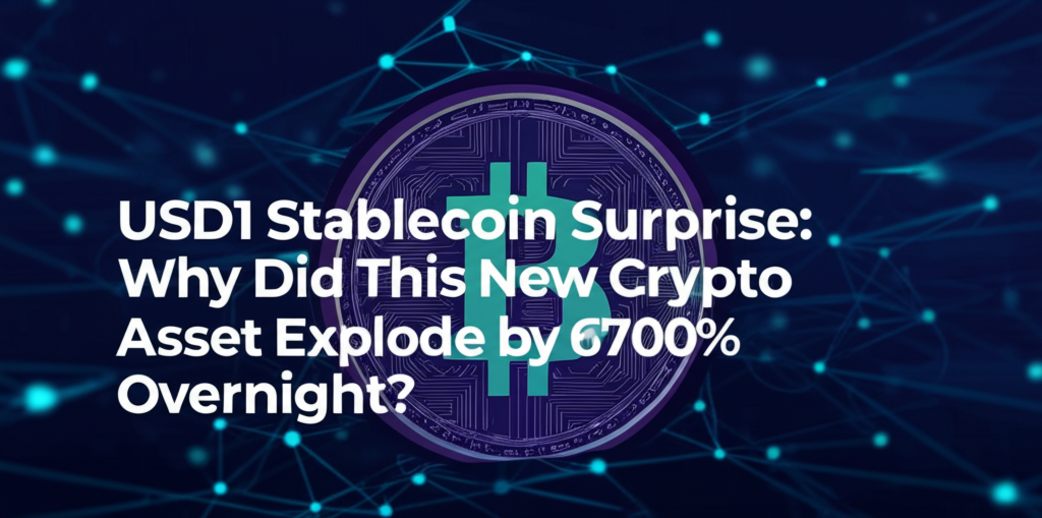USD1 Stablecoin Surprise: Why Did This New Crypto Asset Explode by 6700% Overnight?

A new digital asset, the USD1 stablecoin from World Liberty Financial Inc. (WLFI), has made a notable entrance into the crypto market. Despite skipping a formal announcement, the token is already operational and actively trading on both the Ethereum and Binance Smart Chain networks.
The sudden emergence of USD1 has caught the market’s attention. Market tracking site CoinMarketCap shows the stablecoin’s 24-hour trading volume rocketed by an astonishing 6,700%, reaching over $140 million shortly after its low-profile debut. Its market capitalization is currently reported at approximately $128 million, with the USD1 logo now displayed on both Binance and CoinMarketCap.
 USD1 crypto data from CoinMarketCap](https://sportsixth.com/wp-content/uploads/2025/04/Source-_CoinMarketCaphttps-coinmarketcap.com-currencies-usd1-.png)
Source: CoinMarketCap
Blockchain observers initially detected signs of USD1 activity around March 24, when a smart contract was deployed on the Binance Smart Chain testnet. Early interactions involved wallets associated with the crypto market maker Wintermute. WLFI acknowledged plans for the USD1 stablecoin on March 25, stating it would be backed by U.S. Treasuries, cash, and equivalents, with BitGo acting as the custodian for reserves. However, no specific launch date or exchange support was mentioned then.
The actual soft launch onto the mainnets appears to have taken place around April 12. This timing coincides with the setup of the first liquidity pools for USD1 on decentralized exchanges Uniswap V3 and PancakeSwap V3.
WLFI has remained silent on potential listings on centralized exchanges, suggesting the quiet rollout might be a deliberate strategy. This approach could allow the company to gauge market interest and test its infrastructure under live conditions before wider promotion.
The project has drawn scrutiny due to perceived links with Donald Trump, sparking debate among legislators and financial commentators. During an April 2 House Financial Services Committee hearing on stablecoin regulation developments, Representative Maxine Waters voiced concerns that Trump might aim to integrate USD1 into governmental payment systems, potentially replacing the U.S. dollar.
“Trump likely wants the entire government to use stablecoins… And which coin do you think Trump would replace the dollar with? His own, of course,” Waters remarked during the hearing.
Adding another perspective, Ari10 CEO Mateusz Kara suggested the motivation behind supporting USD1 might be more strategic than a simple embrace of blockchain technology advancements. He theorized that the push for USD1 could serve as a new mechanism for distributing U.S. debt globally.
“I don’t quite believe in Trump’s sudden love for stablecoin and blockchain,” Kara stated. “The real purpose of strengthening the stablecoin market is to make the world a new, receptive market for U.S. bonds.”
